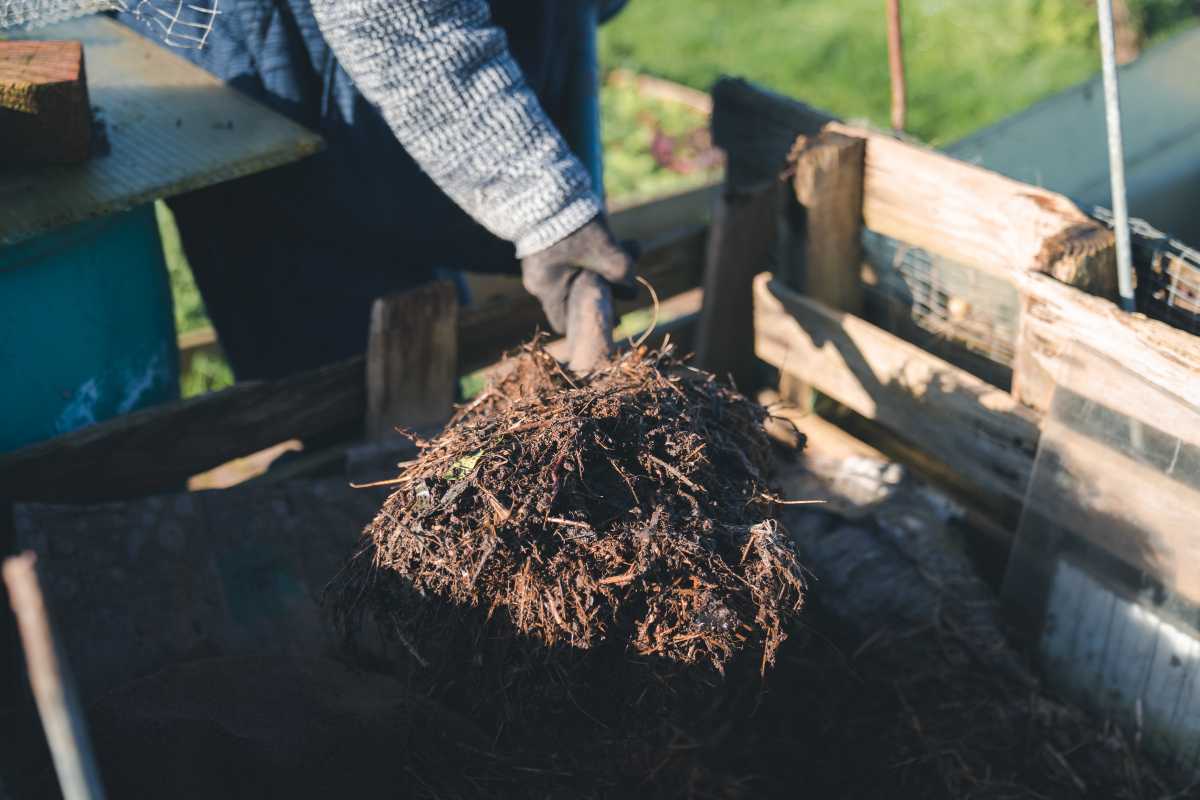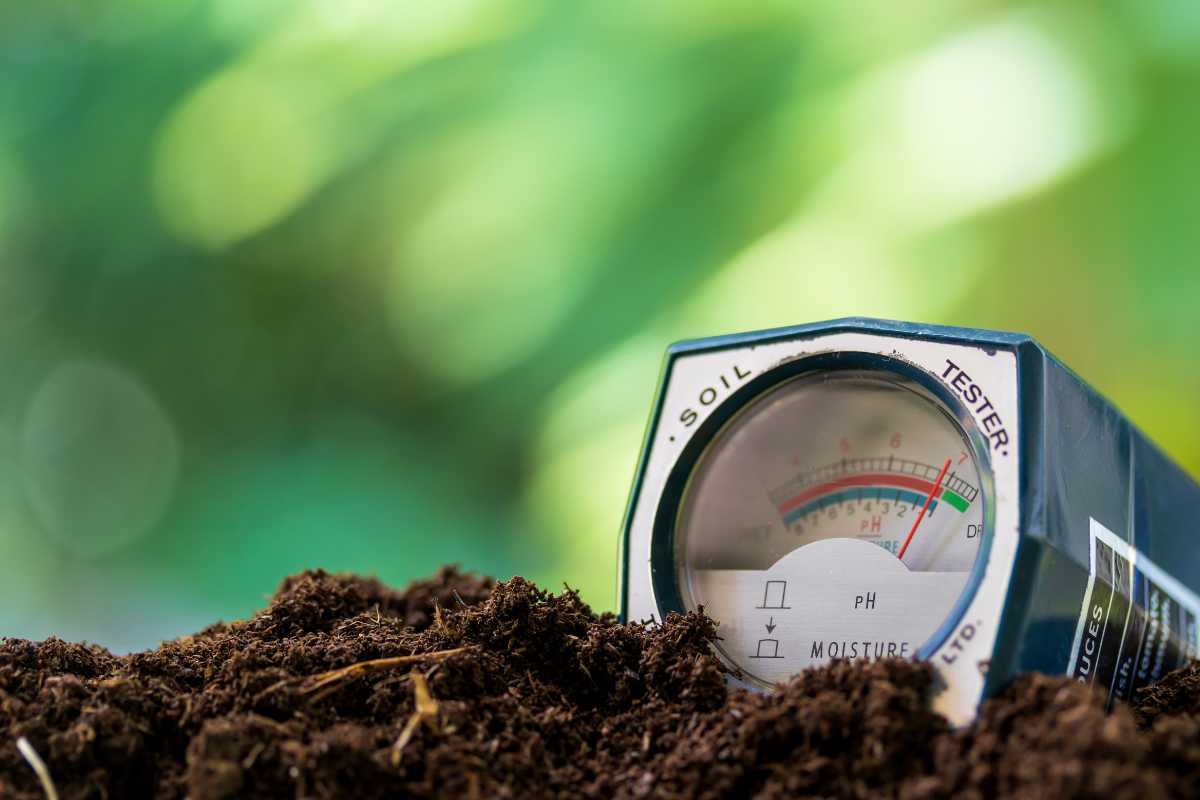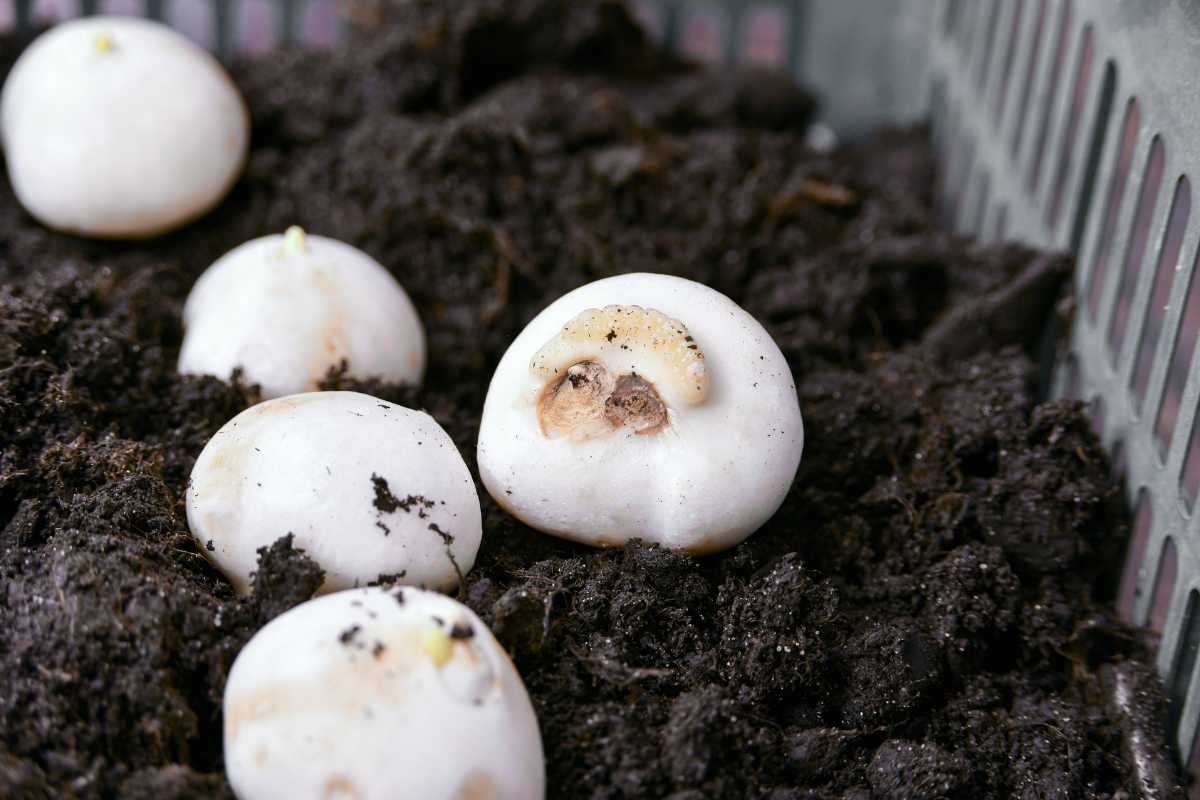Compost and mushroom soil are both used for soil improvement, but there are differences between them.
Mushroom soil (aka mushroom compost) is a natural soil conditioner made from manure and mushrooms, whereas regular compost is a more standard type of soil conditioner that also contains browns and greens as ingredients.
The main differences between mushroom soil and regular compost are the nutrient value, the salt content, the nitrogen content, the pH values, moisture retention, and the price. Depending on your preferences and needs, you can choose the one that benefits you more, either mushroom soil or compost.
You can get different benefits from using either one, so we’re going to compare the two.
Difference 1 – Nutrients

A compost heap is usually better than buying top-quality mushroom soil, because it is made of more diverse ingredients, so it offers more nutrients to plants.
Mushroom soil, by contrast, is much poorer, as it has often been depleted of nutrients. It uses manure and gypsum, and a few other things, such as corn cobs and straw. It also contains a lot of chalk that makes it a strong alkaline mix.
Better Option: Compost offers more nutrients due to the varied ingredients that go into it.
Difference 2 – Salt Content
There are several factors to consider when you’re weighing up the pros and cons of using mushroom soil vs compost. One of the most important things is to assess the salt content.
Mushroom soils are known to have higher salt content, especially the lower quality ones. You don’t need to use very much mushroom compost in order to grow mushrooms because it is so high in salt.
You can reduce the salt content of your mushroom compost by washing the soil very thoroughly and letting the water and excess salt run off.
There are low salt varieties of mushroom soil that you can buy. But it’s probably better to use compost if you’re choosing one or the other.
Better Option: Compost is the better choice for its reduced salt content. Too much salt can result in salt burn for the plants.
Difference 3 – Nitrogen Content
Many plants need nitrogen in their soil for healthy grow. Unfortunately, mushroom soil is low in nitrogen content.
Most plants don’t grow well when given spent mushroom compost as the soil. You’ll need to add nitrogen-rich fertilizer to make up for the low nitrogen content of mushroom soil.
Better Option: You may be better off using something like a good quality potting compost or standard soil.
Difference 4 – pH Levels

The pH level of soil affects how acidic or basic it is. The pH scale runs from 0 to 14. A neutral pH is 7.0; anything below 6.5 is considered acidic; above 7.5 is alkaline.
Soils with an average pH of around 6.8 tend to be slightly acidic. This means they contain some acids, which help break down organic matter. They also hold onto moisture longer, making them ideal for growing vegetables.
Mushroom soil usually has a higher pH level, so it will make soil alkaline. It makes soil alkaline because mushroom soil contains a lot of chalk.
Regular compost can also be slightly alkaline, but not as much as mushroom soil. If your compost has more manure or is fresher compost, it will be more acidic. As time passes, the compost will be more alkaline.
Plants that like acidic soil more prefer compost to mushroom soil. Plants that thrive on alkaline soil do best with mushroom soil.
Better Option: It depends on what you want to grow. Check the pH levels that the plants you want to grow will need.
Difference 5 – Prices

Choosing the right soil improver for your garden will depend on a variety of things, including how big your space is and how much you are willing to spend.
You may be able to save money by buying a smaller quantity, so try to look at the price before you commit to purchase.
If you have spent mushroom soil on your garden beds, you might be looking at a very low cost option. You can get it from a local composting service, or you might be able to purchase spent mushroom soil from a farmer.
When it comes to compost, you’ll have to pay considerably more for compost, because it has been created specifically for improving your garden.
The compost is made of a wide range of ingredients, including kitchen scraps and food waste that would otherwise end up in a landfill or incinerator.
Cheaper Option: The cheapest way of course, is to build your own compost pile in the backyard. Take all your food, kitchen scraps, and other compostable waste. It will be more work to create your own compost, but it’s doable and low-cost.
Difference 6 – Moisture Retention

Plants need water and nutrients to survive. When there isn’t enough water available, the plant won’t receive these essentials.
Compost holds lots of water, while mushroom soil doesn’t. Mushroom soil tends to dry out quickly after being used.
This difference between the two types of soils can affect the growth rate of certain crops. For example, tomatoes require plenty of water during the summer months. But if the soil dries out too fast, then the tomato roots aren’t getting enough oxygen.
This could lead to blossom drop, where the flowers don’t produce fruit. In this case, you should add extra fertilizer to compensate for the lack of water.
Better Option: Compost is better than mushroom soil. Water retention is one of the most important factors when choosing a type of soil. Make sure you choose a soil that retains adequate amounts of water throughout the year.
Mushroom Soil vs Compost Final Thoughts
Both mushroom soil and compost are great options for growing plants and vegetables. They’re easy to use, they provide essential nutrients, and they help keep your garden healthy.
But which one is better? That really depends on what kind of plants you plan to grow. Some plants love an acid environment, while others thrive in an alkaline environment.
Decide on the plants you want to grow and then go with one of them, or even a combination of both.
Here are other articles with great compost tips and information as well:

